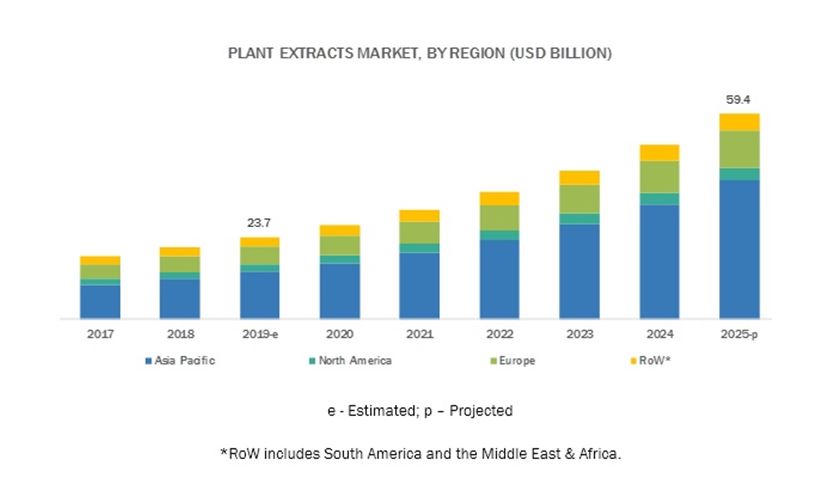Theme: Transforming Future of Natural Products and Medicinal Plants
Natural Products 2020
- Natural Products and Medicinal Plants Conference
- Natural Products 2020
- Tracks / Sessions
- Market Analysis
- VISA-TripAdvisor
September 25 - September 26, 2020 | Montreal, Canada
Conference Series LLC Ltd welcomes you to attend the Natural Products and Medicinal Plants Conference to be held in Montreal, Canada on September 25- September 26, 2020. The theme for the conference this year is Transforming Future of Natural Products and Medicinal Plants.
Details of Natural Products 2020 Conferences in Canada
| Conference Name | Place | Date |
|---|---|---|
| Natural Products 2020 | Montral, Canada | September 25 - September 26, 2020 |
Natural Products 2020 invites all the participants across the globe to attend the 4th International Conference on Natural Products and Medicinal Plants Research (Natural Products 2020) during September 25-26, 2020 in Montreal, Canada. Conference includes keynote presentation, plenary sessions, poster presentation and exhibition. The conference focuses on “Transforming Future of Natural Products and Medicinal Plants”.
Natural Products 2020 aims to bring together best academic scientists, researchers and research scholars to exchange and share their experiences and research results on all attitudes of Natural Products and Medicinal Plants. It also provides a premier multidisciplinary platform for researchers, practitioners and educators to present and discuss the most recent innovations, trends, and involvements as well as practical challenges bump into and solutions accepted in the fields of Natural Products and Medicinal Plants. The attending delegates include Editorial Board Members of related Journals.
Natural Products and Medicinal Plants mainly focuses on the latest and exciting innovations in every area of Medicinal Plants, Natural Products, Plant Ecology & Biotechnology, Drugs from Natural Sources, Toxicological Studies of Plant Products, Importance of Natural Products in Health, Ethnobotany and Ethnopharmacology, Alternative Medicine and Complementary Medicine, Herbal drugs and Formulations, Ayurveda & Homeo Medicine, Aromatic Medicinal Plants, Marine Natural Products, Natural Products as Anti-Cancer Agents, Pharmacognosy and Phytochemistry, Herbal Cosmetics and Nutraceuticals, Qigong & Traditional Chinese Medicine, Traditional Medicine and Herbal Medicine, Challenges and Future Innovations of Traditional Medicine, Homeopathic Medicine, Bridging Traditional Chinese, Arabic & Unani Medicine, Traditional and Alternative Medicine, Natural Products Chemistry, Agricultural Meteorology & Agri Economics, Plant Biotechnology.
-
Why to attend?
- Keynote Sessions
- Workshop & Symposia
- Networking & B2B (Business to Business Meeting)
- B2C (Business to Customers)
- Q&A sessions with the keynote speakers
- Best research & Poster Award
-
Benefits:
- Accepted abstracts will be published in “Journal of Journal of Pharmacognosy & Natural Products” and "Journal of Medicinal & Aromatic Plants" provided with DOI.
- Global networking: In transferring and exchanging Ideas.
- Networking with experts in your field.
- Expert Forums.
- Career Development Sessions.
- Young Scientist awards.
- Best Poster Awards.
- Best Start-Up Awards.
- Preconference and Conference Workshops.
- Symposiums on Latest Research.
Track 01. Medicinal Plants:
Medicinal plants, also called Medicinal herbs, have been designed and used in traditional health practices since ancient times. Herbs synthesise hundreds of chemical compounds for functions including arms against bees, fungus, infections, and vegetarian beast. Numerous chemical with potential or established biological availability have been identified.
Today about 80% of the world’s population rely primarily on plants and plant extracts for healthcare. In addition, of the top 150 trademarked drugs used in the United States of America (USA), 57% contain at least one major active compound currently or once derived from plants. According to data released by the World Health Organization (WHO), ethnobotany has maintained its popularity in all regions of the developing world and its use is immediately developing in the modern countries.
Track 02. Natural Products:
Natural products have been the most successful source of leads for potential drug discovery. Natural products have been confirmable for their medicinal uses for thousands of years. Plants have developed and modify over millions of years to with stand bacteria, insects, fungi and weather to produce unique, structurally various secondary metabolites. Their ethno pharmacological belongings have been used as a primary source of medicines for early drug discovery. Macro and micro fungi have been part of human life for thousands of years. They were used as food (mushrooms), in preparation of alcoholic drinks, medication in traditional medicine and for cultural purposes. Naturopathy is an Alternative treatment method it comprise Herbal treatment, Diet therapy and Homeopathy. Natural treatments re-establish the body's inborn capacity to heal itself without the adverse impacts of traditional drug. Naturopathy is definite primary health care system that mixes cutting edge logical information with customary and normal types of prescription.
Track 03. Plant Ecology & Biotechnology:
Plant ecology is a sub castigation of ecology which studies the circulation and profusion of plants, the effects of environmental factors upon the abundance of plants, and the interactions among and between Plants and other organisms. Examples of these are the distribution of temperate deciduous forests in North America, the effects of drought or flooding upon plant survival, and competition among desert plants for water, or effects of herds of grazing animals upon the composition of grasslands.
- Plant Protection
- Extracting ingredients for cosmetics using green technologies
- Sustainable business practices
- Natural replacements for petrochemical ingredients
- Chitosan as a basic for personal care products
- Advances in Plant Science research
- Pollination and fertilization
- Plant Genetics
Track 04. Drugs from Natural Sources:
Natural products played critical roles in present drug development, especially for antibacterial and antitumor agents. Even though popularity of the synthetic products increased due to its production cost, time effectiveness, easy quality control, stringent regulation and quick effects, but their safety and efficacy was always remained questionable, resulting in the dependence on the natural products by more than 80% of the total population in the developing world, because of its time tested safety and efficacy. A enormous number of natural product-derived compounds in various stages of clinical development highlighted the existing activity and significance of the use of natural products as sources of new drug candidates.
Track 05. Toxicological Studies of Plant Products
A brief detailed study of biological, physical, chemical or any miscellaneous factor, that effects any part of the living organism is known as toxicity. Toxicology is the fundamental science of poisons. Toxicological studies help to decide even if a new drug should be accepted for clinical use or not. Depending on the duration of publicity of animals to drug, toxicological studies may be of three types viz. acute, sub-acute and chronic. Toxicity depends not only on the dose of the material but also on the toxic properties of the material. The relationship between these two factors is important in the assessment of therapeutic dosage in pharmacology and herbalism. It is necessary to investigate the herbs scientifically which have been used in traditional medicine to improve the quality of healthcare.
Track 06. Importance of Natural Products in Health
- Ornamental plants and bioactive compounds
- Olive Bioactive Applications and Prospects
- Phytochemistry Experts Meeting
- Drug discovery from natural sources and Herbal Medicines
Track 07. Ethnobotany and Ethnopharmacology
Ethnobotany and Ethnomedicine are the fundamental starter, in the context of sustainable development and honest sharing of the benefits derived from using of natural resources such as plants. Ethnobotany and Ethnopharmacology, like all ethnosciences, have in common a human and developmental component. Ethnopharmacology has also undergone an change from the classic to modern concept, but changes are lighter than those suffered by Ethnobotany. Modern Ethnopharmacology grasp botanical, ethnobotanical, phytochemical, Ethnopharmacological, pharmacological and toxicological fields. Photochemistry, Pharmacy, History, and Geography, Ecology and other information and science fields will be taken into account.
Track 08. Alternative Medicine and Complementary Medicine
- Botany plant ecology
- Advanced plant and Forest ecology
- Components of Plant and forest ecology
Track 09. Herbal Drugs and Formulations
Vegetals have been utilized for health and restorative purposes for a few a great many years, majority of people still using herbal medicine to meet their wellbeing needs. Therapeutic plants are critical hotspots for medicine constructing. Medicinal and herbal medicines having most inflated market in Asia since decade, remedial plants can be utilized as food to meet every day necessities of body.
The art or practice of using herbs and herbal medicines to maintain health and to prevent, alleviate, or cure disease is called also herbalism. They are used for treating anxiety, depression, Healing, ache and many more. There are different types of herbs like Anti-Inflammatory drug Herbs, Smoking Herbs, Fertility Herbs, Adopt genic herbs, Healing Herbs. There are also different types of herbal products used in different forms some of them are Herbal Tea, Herbal Hair Products, Herbal Cigarettes, Herbal Antibiotics, and Herbal Toothpastes.
Track 10. Ayurveda & Homeo Medicine
Ayurveda is defined as the alternative form of medication where drugs made up of vegetables, plant, herbs, and minerals are used for internal and external use. On the other hand, Homeopathy is also considered as alternative medicine that triggers our body’s immune system to fight against any disease. The third and the most commonly used form is Allopathy, where treatment is given through the conventional means i.e. drugs made up of the chemical having opposite effect to that of symptoms and thus helps in combating diseases.
- Modern Plant Breeding Techniques
- Transgenic Plants and Green Revolution
- Plant breeding in organic agriculture
- Plant Metabolism and Metabolic Engineering
- Genetically Modified Seeds
- Seed Treatment
- Seed Technology
- Seed Health
- Environmental and Ecology
Cancer is a major cause of deaths all around the globe. Although various anticancer drugs are available, most of them are expensive and have serious side effects. Natural compounds are usually non-toxic and inexpensive. Many such compounds have been identified and analysed for their health benefits for centuries, and several nutritional factors derived from natural products have attracted considerable attention as therapeutic agents for the prevention and treatment of cancer. Current cancer therapies often involve surgical removal and radiation treatment of the large accumulated biomass of cancer, typically followed by systemic chemotherapy treatment used for maintenance treatment.
Pharmacognosy is the study of medicinal drugs assume from plants or other natural sources. The American Society of Pharmacognosy determine pharmacognosy as "the study of the physical, chemical, biochemical and biological equity of drugs, drug substances or potential drugs or drug substances of natural element as well as the search for new drugs from natural sources".
Phytochemistry is the investigation of phytochemicals, which are chemicals bring from plants. Those considering phytochemistry endeavour to portray the structures of the vast number of auxiliary metabolic mixes found in plants, the elements of these mixes in human and plant science, and the biosynthesis of these mixes. Plants combine phytochemicals for some reasons, including securing ourselves against bug assaults and plant sicknesses. Phytochemicals in livelihood plants are regularly dynamic in human science, and much of the time has medical advantages.
Nutraceuticals are any food, or part of a food supplements, that offers a medical or health benefit after simple nutrition. Such benefits may include the elimination or recurrence of disease. These products scope from proteins, vitamins, minerals, pure compounds and natural based used in capsules, tablets to foods that contain secured bioactive component. Everything from vitamins, accumulation to sports drinks, dairy products, snacks, and pre-prepared diet meals could be contemplate as nutritious food.
The herbal cosmetics are the arrangements containing phytochemical from a variety of botanical sources, which effects the functions of skin and provide nutrients fundamental for the healthy skin and hair.
Track 16. Qigong & Traditional Chinese Medicine
Qigong is an overall umbrella of thousands of diverse styles including hard Qi of the Martial Arts, Tai Chi Chuan, and the soft Qi of the Healing styles of Medical Qigong. The Conference will exhibit an exciting array of world experts who have expertise with minor to serious death defying illnesses.
- Plant Genome Sequencing
- Crop Genomics
- Plant genomics scope in Europe
- Genomics of plant responses to environmental stress
Track 17. Traditional Medicine and Herbal Medicine
Today, plants are being used to extravagance a number of health concerns and conditions, including allergies, arthritis, migraines, fatigue, skin infections, wounds, burns, gastrointestinal issues and even cancer proving that it’s true that food is medicine. These herbs are less expensive and they are a safer means of treatment than conventional medications, which is why so many people are choosing to go back to this traditional idea of medicine.
- Gregory Mendel plant genetics
- Genetically engineered crops
- Advanced plant genetics
- Genotyping-by-sequencing for plant breeding and genetics
Track 18. Challenges and Future Innovations of Traditional Medicine
Approximately 80% of individuals today rely on home grown meds as a part of their essential medicinal services as indicated by the WHO, there is yet awesome worry about the wellbeing and adequacy of home grown utilize. While home grown prescriptions can conceivably add to the headways of human services framework, many real difficulties must be overcome before the effective combination of natural cures into standard medications. One of the real hindrances is the flow absence of exact interpretations and elucidations of Traditional Chinese home-grown messages and research by Western researchers.
- Agricultural Biotechnology
- Horticulture
- Agricultural Genetics
- Organic agriculture
- Horticulture Science
- Ecological Agriculture - Sustainable Agriculture
- Irrigation Water Management
Track 19. Homeopathic Medicine
Homeopathy is a medical system based on the acceptance that the body can cure itself. Those who practice it use insignificant amounts of natural items, like plants and minerals. They believe these stimulate the healing process. It was developed in the late 1700s in Germany. It’s common in many European countries, but it’s not quite as popular in the United States.
Homeopathic antidote are derived from items that come from plants, minerals, or animals, such as red onion, arnica (mountain herb), crushed whole bees, white arsenic, poison ivy, belladonna (deadly nightshade), and stinging nettle. Homeopathic remedies are often formulated as sugar bullets to be placed under the voice. they may also be in other forms, such as ointments, gels, drops, creams, and tablets. Treatments are “individualized” or bespoke to each person—it is not uncommon for different people with the same condition to receive different treatments.
Track 20. Bridging Traditional Chinese, Arabic & Unani Medicine
Unani medication, additionally called Unani tibb, is a traditional medicinal drug known for restoration and fitness maintenance. The origins of Unani medication are mainly found in the doctrines of the ancient Greek physicians Hippocrates and Galen. Being a discipline, it turned into later developed and refined through systematic test by the Arabs who converted a few conventional drugs as Arab or Unani drug treatments, most prominently by using Muslim student-medical doctor Avicenna both via using recovery herbs or strategies. During the Caliphate, the bulk of Greek knowledge turned into translated into Arabic identical with the concept of medicine appearing as the concepts of medication. With additional contributions of medical expertise from unique or different components of the Middle East and South Asia, Unani medicine got here out to be called Arabian, or Islamic, medicinal drug.
- Soil Fertility and Soil Biochemistry Experts Meeting
- Soil Erosion and soil management Experts Meeting
- Sustainable Soils and Soil Geology
- Soil Health
- Plant Soil Science
Track 21. Natural Products Chemistry
A natural product is a heterocyclic compound or material produced by a living organism that is, found in personality. In the broadest sense, natural products include any substance produced by activity. Natural products can also be prepared by chemical process (both semi and total synthesis) and have played a central role in the development of the field of chemical science by providing challenging synthetic targets. The term natural product has also been extended for financial purposes to refer to cosmetics, dietary supplements, and foods produced from natural sources without added unreal element, Within the field of biochemistry, the definition of natural products is usually restricted to mean purified organic compounds isolated from natural sources that are produced by the pathways of primary or secondary metabolism Within the field of medicinal chemistry.
Track 22. Agricultural Meteorology & Agri Economics
Agricultural meteorology is the science that applies knowledge in weather and climate to qualitative and quantitative improvement in agricultural production. Agricultural meteorology involves meteorology, hydrology, agrology and biology, and it requires a diverse, multidisciplinary array of data for operational applications and research. Basic agricultural meteorological data are largely the same as those used in general meteorology
- Plant Diseases Epidemiology
- Vegetative propagation
- Plant Cell Cycle and Cell Division
- Primary and Secondary Growth
- Application of plant and forest ecology
Track 23. Plant Biotechnology
Plant biotechnology is a set of techniques used to readapt for specific needs or opportunities. Situations that combine multiple needs and opportunities are common. Biotechnology is the integrated use of biochemistry , microbiology and engineering science in order to achieve technological application of the capacity of micro-organism, cultured tissue cells and part thereof. Application of science and technology to plants, parts, products and models, to alter living or inert materials, in order to develop knowledge, goods and services An important aspect of all applied science society processes is the culture of either the plant cells or animal cells or microorganisms. The Faculty of agriculture is to promote the confirmable use of renewable natural resources through scientific research.
"The main aim of this program is to use the above mentioned concepts to train. Manage products and pave way for future developments through research activities"... Weed Management, Irrigation Techniques, Water resource management, of Genetics, Plant Breeding, Seed Technology, and Basics of Biotechnology.
Summary
Medicinal plants, also called medicinal herbs, have been discovered and used in traditional medicines practices since prehistoric times. Natural products play an big role in Drug discovery. The demand for Medicinal Plant Extracts has pushed manufacturers to innovate and develop new product lines, which provide better quality and offers various health benefits. About more than 50 percent of FDA-accepted drugs were Natural products or natural products by-product. The plant extracts market is estimated to be valued at USD 23.7 billion in 2019 and is projected to reach USD 59.4 billion by 2025, at a CAGR of 16.5% from 2019 to 2025.
The phytomedicines & herbal extracts division is estimated to grow at the highest CAGR due to increasing demand from the pharmaceutical & comestible supplement and cosmetics industries across the globe.
Scope and Importance
Medicinal Plants, Natural Products have as of late recovered noticeable quality with the expanding comprehension of their organic essentialness and expanding acknowledgment of the inception and capacity of their basic decent variety. This issue features a portion of the real issues and advances in regular items investigate, from late engineered ways to deal with access confounded characteristic items to another instructive program which uses normal items as a reason for disclosure based research.
Traditional medicines have been broadly recognized in low to medium income countries. In some developing countries, traditional medicines have been widely used for health services especially at primary health care. On the other side, the use of traditional medicines in many developed countries has been generally developing.
Natural medicine is broadly appreciated to increase the body’s capability to ward of diseases. Increased immunity and an overall healthier state of being can easily be achieved with continued treatment.
Key Findings
- Growing pharmaceutical as well as personal care industry is the reason for growing demand for medicinal plant extracts.
- Increasing acceptance of medicinal plant extracts based products due to rising awareness as well as health concerns
- increasing demand for natural skincare products containing medicinal plant extracts
Regional Outlook
The global medicinal plant extracts market is regionally segmented into North America, Europe, Asia Pacific, and Rest of the World (Row). Asia-Pacific is projected to be the fastest-growing plant extracts market, due to the large availability of raw materials and required environmental conditions for the growth of plants used for extraction followed by North America. Growing health benefits coupled with rise in demand for personal care products has strengthened the growth of global medicinal plant extract market and hence is expected to significantly expand the revenue contribution of the market during the forecast period. In Asia Pacific, owing to ancient history of herbal and natural remedies for diseases, will drive the growth of this market in this region. However, in the Asia Pacific region, significant growth is expected in China and India due to increasing health concerns as well as wide ranging medical uses, over the forecast period 2017-2023.
The Medicinal Plant Extract report also evaluates the past and current Medicinal Plant Extract values to predict future market directions between the forecast period 2019 to 2025.
Factors such as rising awareness regarding the side-effects of synthetic flavors and health benefits offered by phytomedicines and herbal extracts drive the market growth for plant extracts.
Asia Pacific is projected to account for the largest market share during the forecast period
In 2018, Asia Pacific establishes a market share of 56.5% within the plant extracts market. The market for plant extracts in the region is developing due to strong local and international demand. The Asian countries such as China and India have a considerable equatorial area, having diverse medicinal and herbal plants. This allows small and medium-sized manufacturers of plant extracts, to have efficient processing of plant extracts as they are alive of the benefits offered by them, mature to the affluent history of producing medicinal plants with advanced technology. Manufacturers in Indonesia, India, and Thailand are continuously investing in the market and focusing on innovation to expand their product range.
Scope of Report
Based on type, the plant extracts market has been segmented as follows:
- Spices
- Essential oils
- Flavors & Fragrances
- Phytomedicines & Herbal Extracts
Based on application, the plant extracts market has been segmented as follows:
- Pharmaceuticals & dietary supplements
- Food & beverages
- Cosmetics
- Others (personal care products and toiletries)
Based on the source, the plant extracts market has been segmented as follows:
- Leaves
- Fruits, flowers, and bulbs
- Rhizomes & roots
- Barks & stems
- Others (seeds, pods, and berries)
Based on the region, the plant extracts market has been segmented as follows:
- North America
- Europe
- Asia Pacific
- RoW (South America and the Middle East & Africa)
Planning a Trip to Montreal, Canada!!! Attending Meeting!!!
An issue with VISA!!
Natural Products Committee will be happy to help you in all regards to plan your trip to Montreal, Canada. Avail the official invitation letter from us to attend this event ahead with a closer step for approval of your VISA.
Find out what you need to do to visit Canada as a tourist or business person, how to extend your stay in Canada and what documents you need to carry with you to transit through Canada.
Application submission:
Canada does not have a visa office in every country so it is important that Delegates/Attendees visit the website of the visa office responsible for processing their visa applications. Information is available on the website on how to submit a visa application and the documentation required.
Delegates/Attendees are encouraged to submit their visa applications well in advance of the date of the event at a Visa Application Centre or on-line E-applications (e-Apps).
E-Apps
This system allows clients to submit applications online.
Delegates/Attendees that need a visa but require their passport for other travel purposes are strongly encouraged to submit their visa applications online (e-Apps). Delegates/Attendees that choose to apply online will not have to submit their passport until a decision has been taken on their applications. If required, the visa office will send the applicant instructions on how and where to send their passports to finalize the visa process.
Visa Application Centres (VACs):
VACs are commercial service providers authorized by Canada to provide specific services to applicants.
VACs provide a number of services including help applicants fill out forms, answer questions and ensure that applications are complete, thereby reducing unnecessary delays or refusals due to incomplete applications.
Applicants that are required to provide biometrics information as part of the visa application process can do so at a VAC. Additional information on the biometrics requirements is available at the IRCC website.
VACs send applications to Visa Offices and transmit decisions to applicants in a secure and confidential manner. VACs do not process visa applications and play no role in the decision-making process.
Visa Applications Processing Time:
Processing time for visa applications vary depending on the office and the time of the year. Participants should be encouraged to apply early for their visas, and to submit complete applications including all supporting documents.
Please visit the IRCC website for information on the time it takes to process visa applications at the various visa offices.
NEW - Electronic Travel Authorization (eTA)
As of March 15, 2016, visa-exempt foreign nationals are expected to have an Electronic Travel Authorization (eTA) to fly to or transit through Canada. Exceptions include U.S. citizens and travelers with a valid Canadian visa. Canadian citizens, including dual citizens, and Canadian permanent residents are not eligible to apply for an eTA.
However, from March 15, 2016, until fall 2016, travellers who do not have an eTA can board their flight, as long as they have appropriate travel documents, such as a valid passport. During this time, border services officers can let travellers arriving without an eTA into the country, as long as they meet the other requirements to enter Canada. We invite you to consult the IRCC website regularly for information updates on eTA.
Conference Highlights
- Medicinal Plants
- Natural Products
- Drugs from Natural Sources
- Herbal Cosmetics and Nutraceuticals
- Ayurveda & Homeo Medicine
- Ethnobotany and Ethnopharmacology
- Herbal drugs and Formulations
- Aromatic Medicinal Plants
- Toxicological Studies of Plant Products
- Plant Biotechnology
- Pharmacognosy and Phytochemistry
- Traditional and Alternative Medicine
- Natural Products as Anti-Cancer Agents
- Natural Products Chemistry
- Homeopathic Medicine
- Importance of Natural Products in Health
- Alternative Medicine and Complementary Medicine
- Marine Natural Products
- Qigong & Traditional Chinese Medicine
- Traditional Medicine and Herbal Medicine
- Challenges and Future Innovations of Traditional Medicine
- Bridging Traditional Chinese, Arabic & Unani Medicine
- Agricultural Meteorology & Agri Economics
- Plant Ecology & Biotechnology
- Acupuncture and Chiropractic Technique
To share your views and research, please click here to register for the Conference.
To Collaborate Scientific Professionals around the World
| Conference Date | September 25-26, 2020 | ||
| Sponsors & Exhibitors |
|
||
| Speaker Opportunity Closed | |||
| Poster Opportunity Closed | Click Here to View | ||
Useful Links
Special Issues
All accepted abstracts will be published in respective Our International Journals.
- Journal of Pharmacognosy & Natural Products
- Journal of Medicinal & Aromatic Plants
- Journal of Marine Science: Research & Development
Abstracts will be provided with Digital Object Identifier by





























